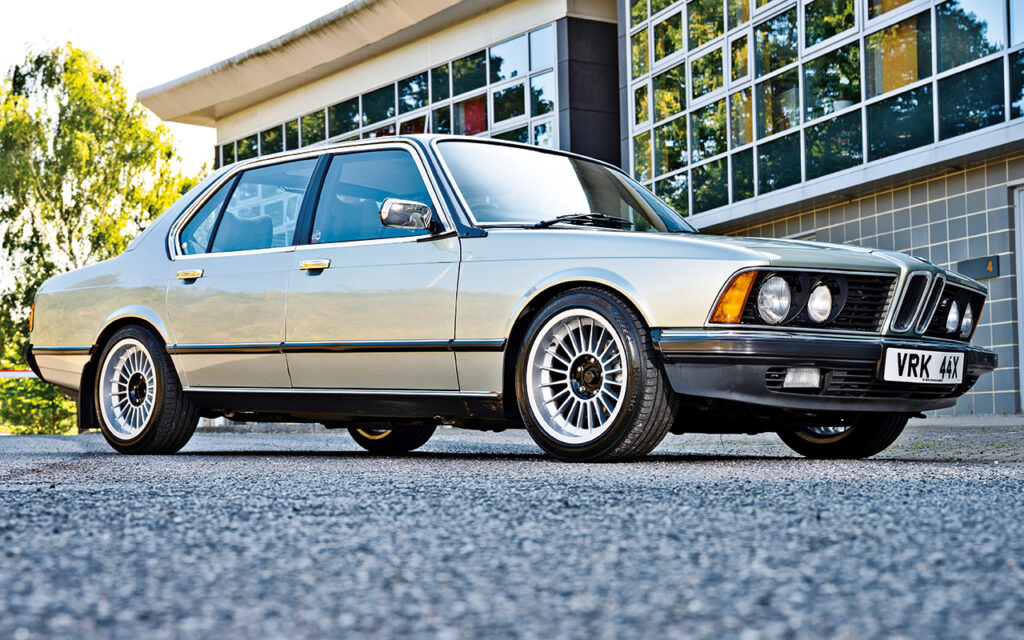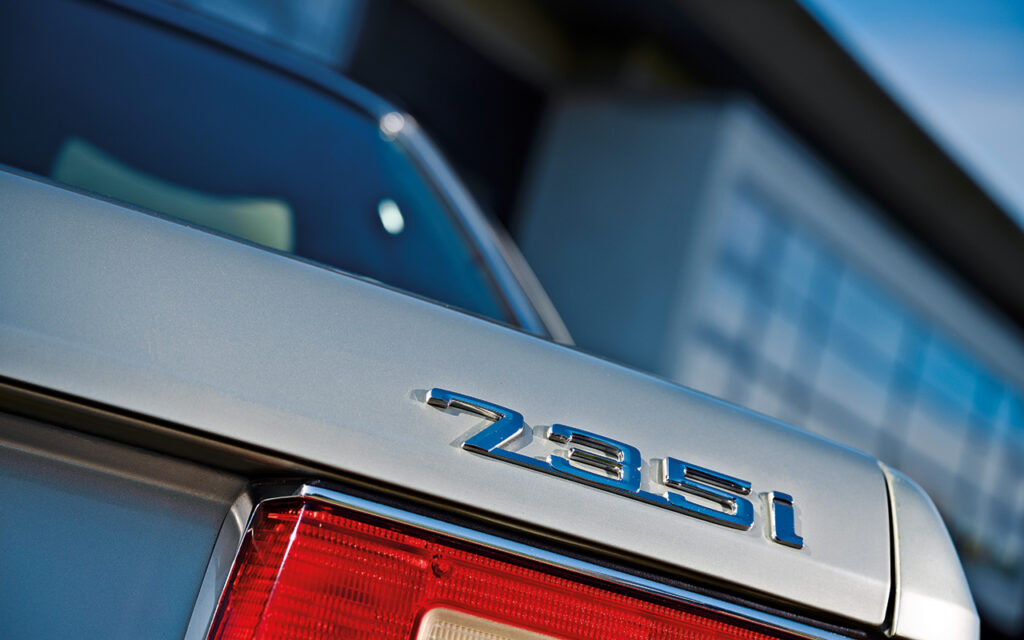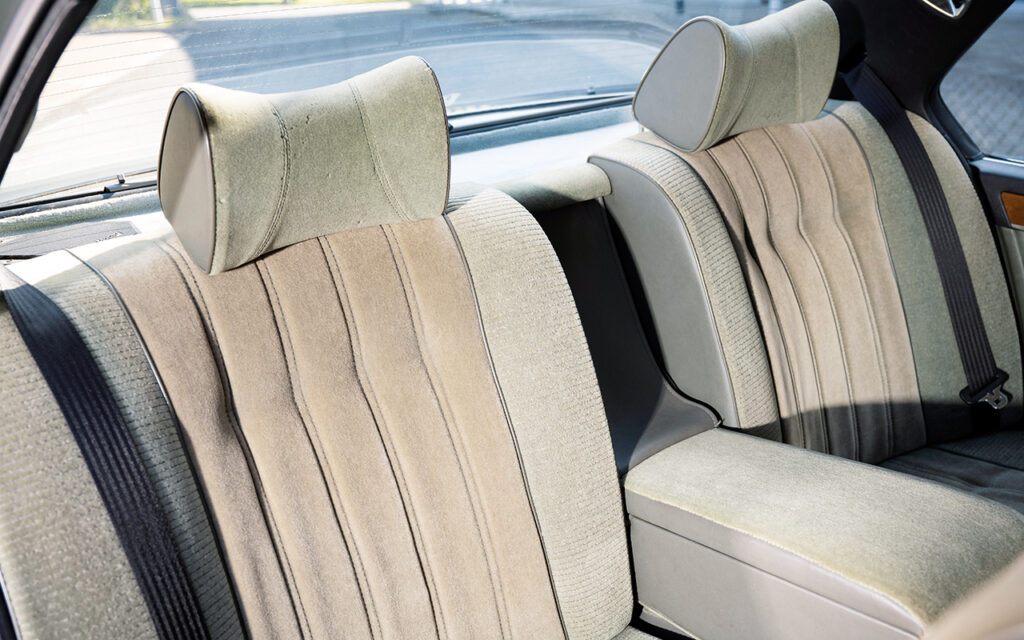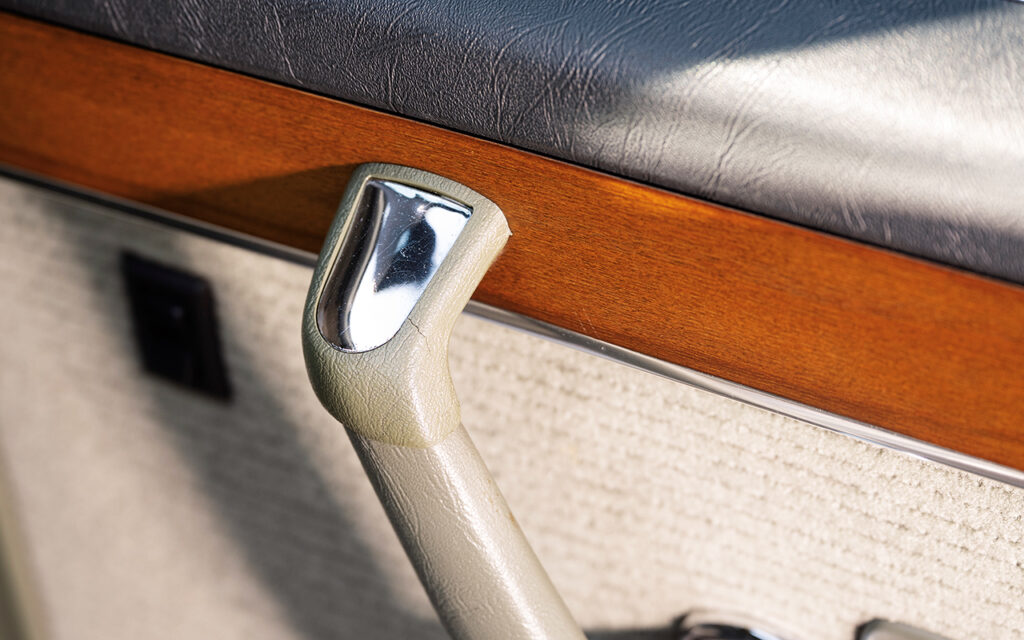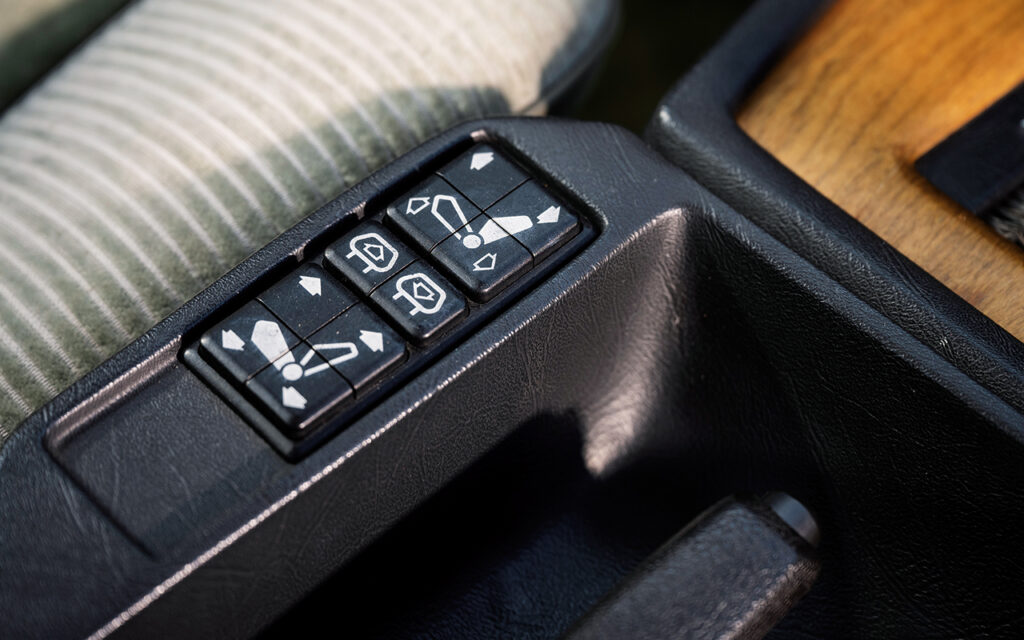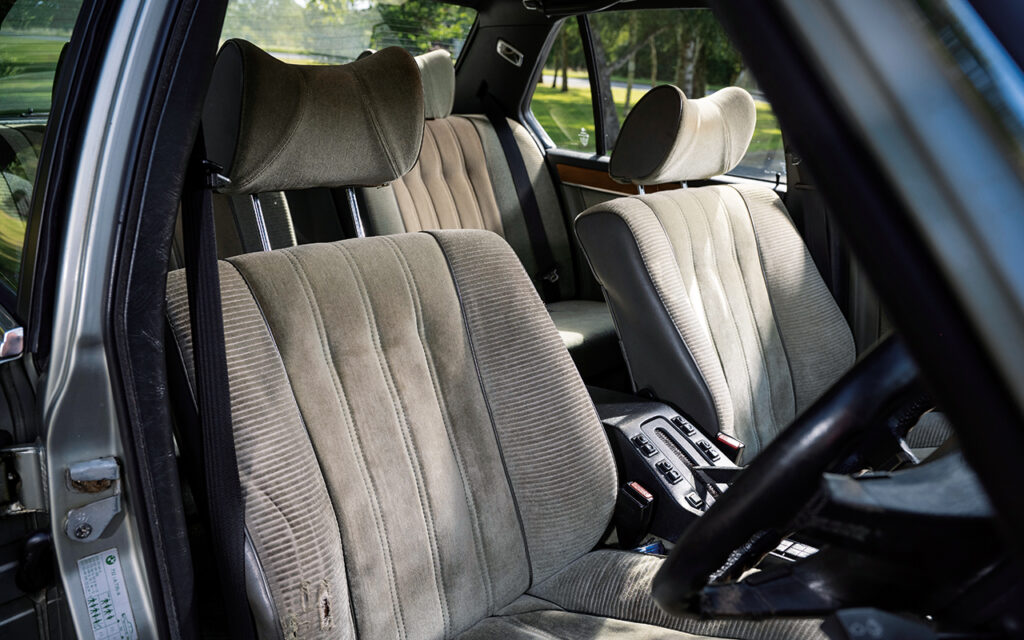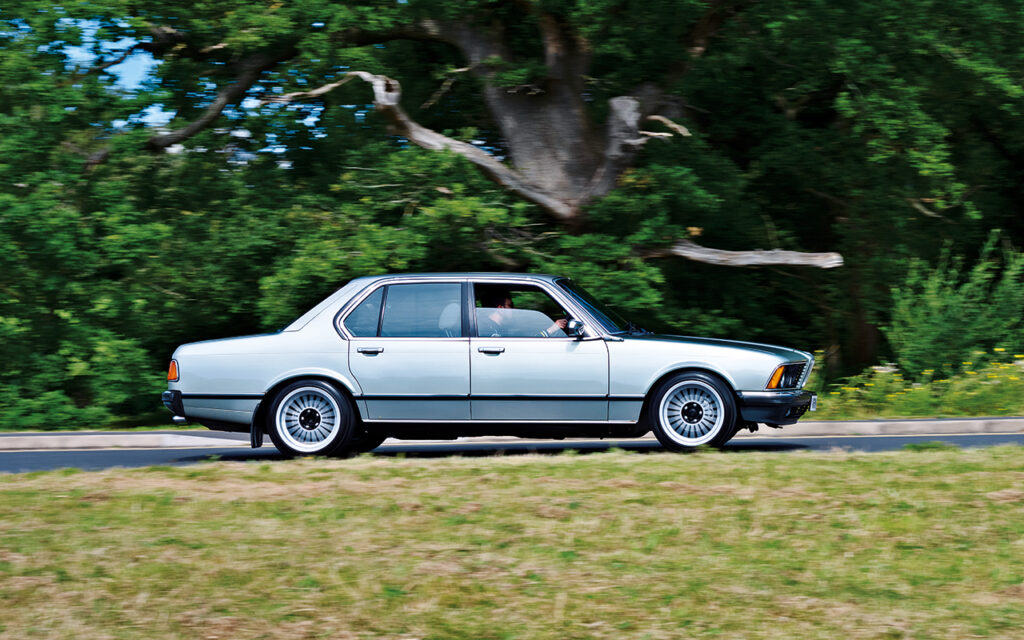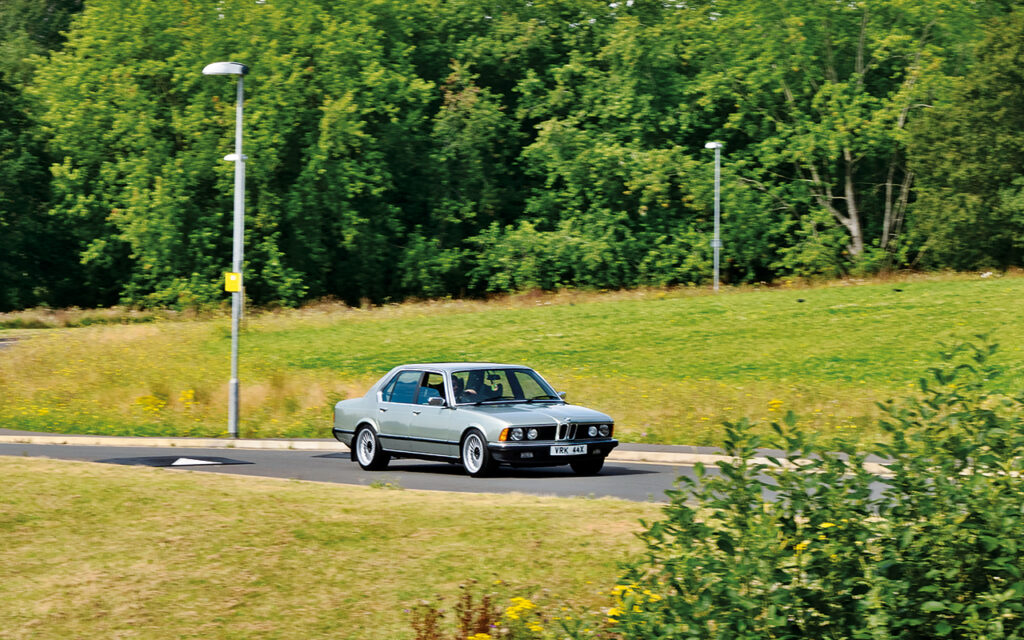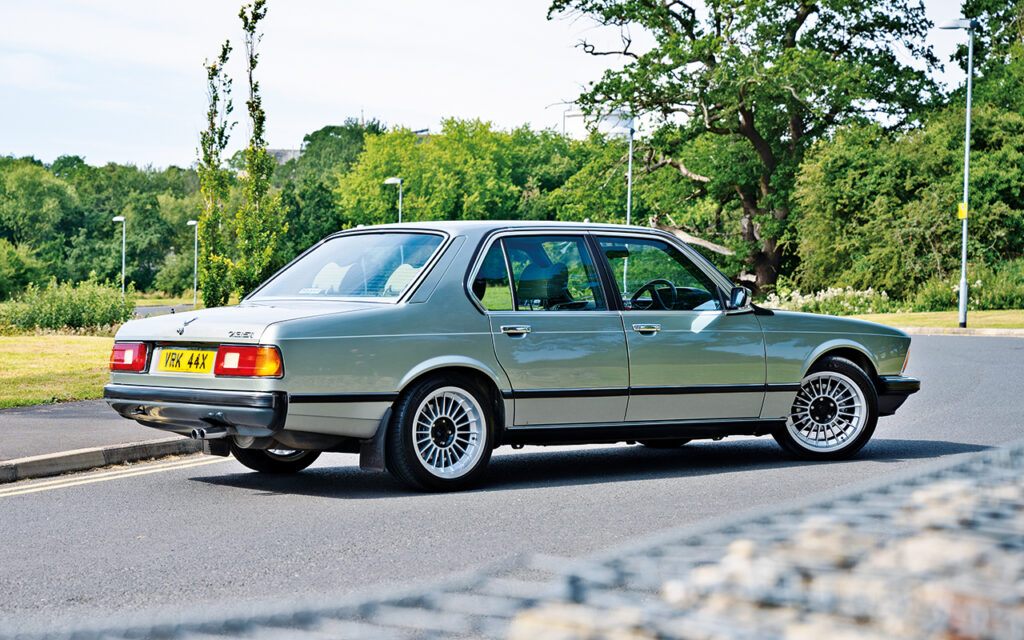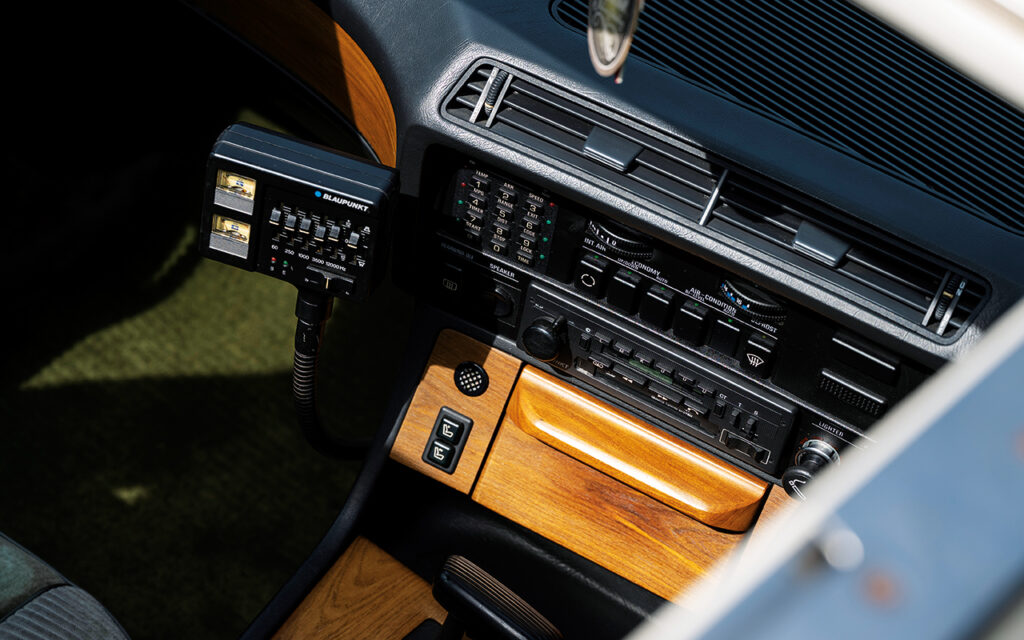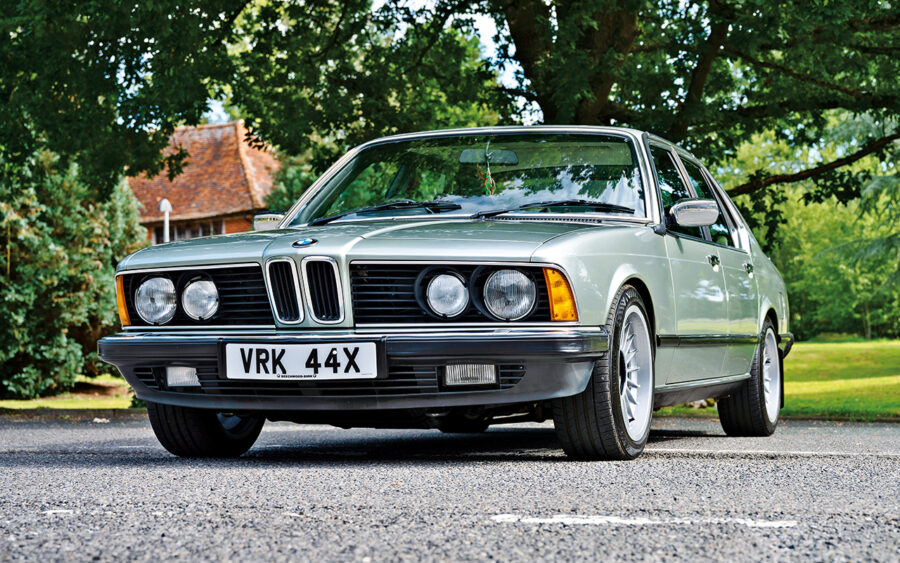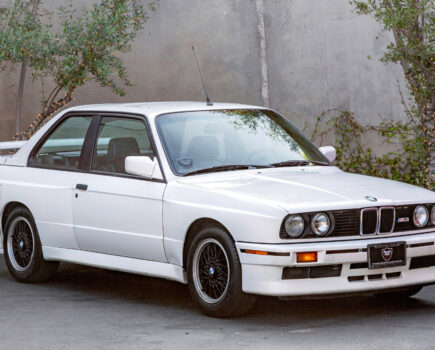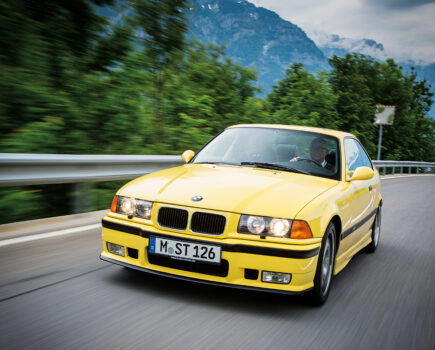The E23 7 Series was the first in a long line of large BMW luxury saloons – and the car that first took on the Mercedes S-Class
Words: Graham Leigh Images: Jason Dodd
The shark-nosed BMWs of the 70s and 80s have aged incredibly well and look ever more handsome as the years advance. Whilst prices and demand have long been high for the period E24 6 Series, E28 5 Series and E21 3 Series, the E23 7 Series was oft a forgotten model of that guise.
The E23 was of significant importance to the marque’s development and standing amongst competitors. Whilst the outgoing E3 saloon was an accomplished car, it was never quite as coveted as the contemporary Mercedes S-Class. The E23 changed that and it was the first time there was a genuine German competitor in that sector.
In keeping with the BMW ethos, there was still a driver-focussed flavour to the car with class-leading handling and the signature driver facing curved centre console whilst the luxury and refinement were self-evident. The Paul Bracq penned new kid on the block was 160mm longer than the E3 it replaced with a longer wheelbase and track. Big, imposing but simultaneously sculpted and purposeful, the new car looked as high-flying as the Saville Row dressed clientele it was aimed at.
At the 1977 launch, there was a choice of the carburettor fed 728 and 730 or the range-topping fuel-injected 733i (all UK models were variants of the M30 straight-six). However, within two years, all models changed to fuel injection with the 733i giving way to the 735i as the flagship model which shared the M30 3430cc ‘big six’ engine with its E24 and E28 stablemates. The 728 and 730 were replaced with the 728i in 1979 which ran for three years alongside. The 732i was sold from 1980-1983. All UK models were 735i variants from 1983 onwards.

Left-hand-drive European markets were treated to the 745i from 1979-1986 which was initially powered by the M102 engine which is a turbocharged 3.2 version of the M30. In 1982 the engine was upgraded to the 3.4 M106 achieving a heady 248hp. The South African market also had a 745i but this was powered by the same naturally aspirated 280hp M88/3 power plant that could also be found in the E24 M635i and E28 M5.
Other E23 rarities include fully loaded US market only L7 models with the leather interior extending to the dashboard, door cappings and roof lining. If you can find one, Alpina B8, B9 and B10s were all E23 based models and are typically characterful, open-cheque book specials. Technologically the E23 represented a leap forward with a host of features that would become synonymous with the brand being introduced: on-board computer, service interval indicator, check control panel, climate control, ABS and driver’s airbag were among the breakthroughs.
Styling-wise there was a minor facelift in 1982 which featured a slightly reworked, more aerodynamic front end with a fully specced ‘Highline’ range-topping 735i available from 1984. The four-speed ‘overdrive automatic transmission replaced the previous three-speed unit in the same year.
Today it’s hard to believe that such a car could have had a manual option but back then there was still a demand (although autos were/are much more common). The four-speed manual option available from launch was replaced with a five-speed in 1981.
The E23 7 Series was well thought-of but it was an expensive executive saloon so the sales figures, although seen as successful for the sector, were never huge. During its 10-year production run, there were 285,029 sold globally. The car was eventually replaced by the E32-generation car in 1986.
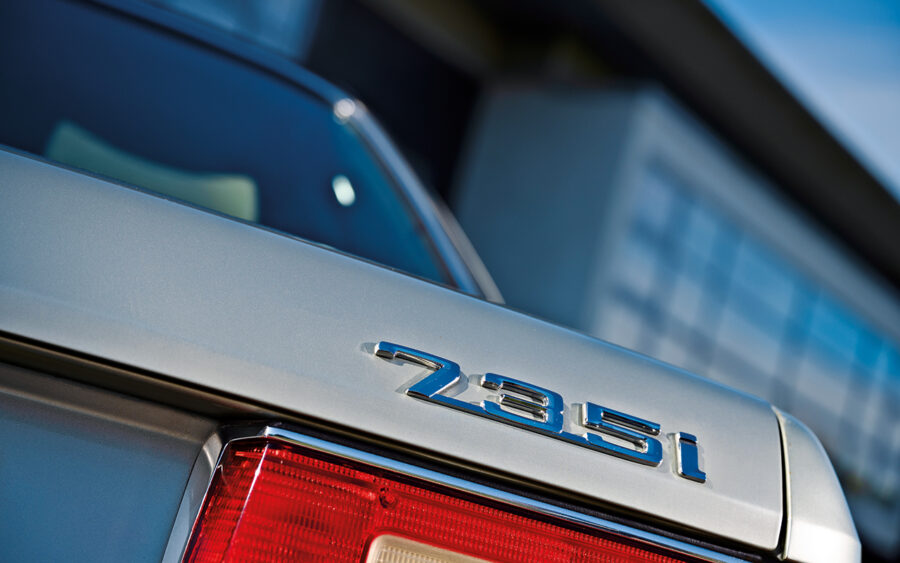
Timeline
1977
BMW 7 Series E32 launched in 728, 730 and 733i guise
1979
All engines had changed to fuel injection. 733i gives way to 735i flagship. 728 and 730 replaced with 728i
1980
732i introduced
1982
Minor facelift introduced
1983
All UK models sold as 735i variants from this point onwards
1986
E23 replaced by E32 7 Series
